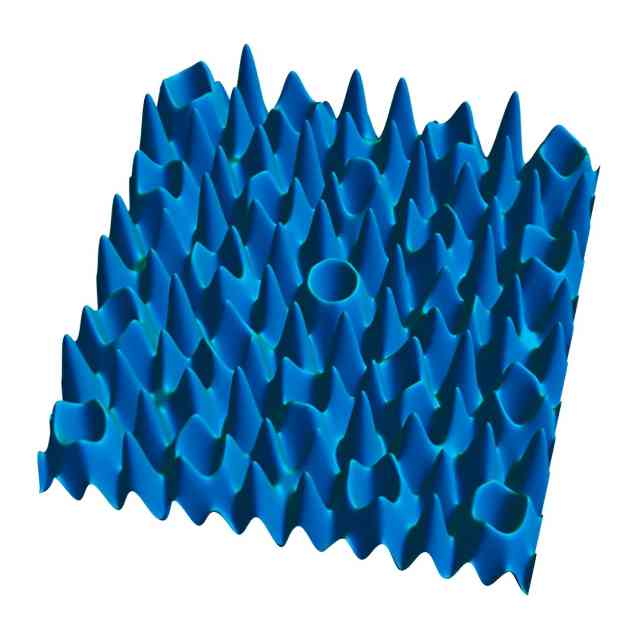Physicists at the Cavendish Laboratory in Cambridge have achieved a groundbreaking feat by creating the first two-dimensional version of the Bose glass, a new phase of matter that challenges traditional statistical mechanics. This remarkable discovery, detailed in a recent publication in Nature, opens up exciting possibilities for further research into the behavior of matter in unique and complex systems.
The Bose glass, as its name implies, exhibits glassy properties where all particles within it become localized. This means that each particle remains isolated, not mixing with its neighboring particles. To illustrate this concept, imagine if coffee were localized – when stirring milk into the coffee, the distinct black and white patterns would remain fixed in place instead of blending together over time.
To create this novel phase of matter, the researchers utilized multiple overlapping laser beams to generate a quasiperiodic pattern, resembling a Penrose tiling. This pattern, which is long-range ordered but non-periodic, served as the foundation for the formation of the Bose glass when filled with ultracold atoms chilled to nanokelvin temperatures, close to absolute zero.
Professor Ulrich Schneider, leading the study as the Professor of Many-Body Physics at the Cavendish Laboratory, emphasized the significance of localization in advancing both statistical mechanics and quantum computing. He explained that in a localized system, quantum information can be stored and preserved for extended periods due to the lack of interaction with the surrounding environment.
The team’s research focuses on quantum simulation and many-body dynamics using ultracold atoms to investigate complex quantum phenomena that are challenging to simulate numerically without a full-scale quantum computer.
One of the fundamental principles in understanding matter is ergodicity, where a system relaxes into a thermal state where only temperature plays a significant role. This forms the basis of statistical mechanics, enabling predictions based on a system’s overall properties rather than its intricate details.
However, the Bose glass presents a unique challenge as it appears to be non-ergodic, meaning that it retains its specific details without simplifying into a thermal state. This non-ergodic behavior makes it an ideal candidate for studying many-body localization, a phenomenon with vast implications for various fields, including quantum computing.
Dr. Jr-Chiun Yu, the lead author of the study, expressed optimism about the potential applications of many-body localization, highlighting its role in preserving quantum information within a system and preventing decoherence, a common issue in current quantum computing technologies.
During the experiment, the researchers observed a sharp phase transition from the Bose glass to a superfluid, akin to the melting of ice with increasing temperature. Dr. Bo Song, a key contributor to the research, explained that a superfluid allows particles to move without resistance, demonstrating a unique property related to superconductivity.
The Bose glass and superfluid represent distinct phases of matter, similar to ice and liquid water, coexisting within the same experiment. The experimental results align with recent theoretical predictions and shed light on the formation and evolution of the Bose glass, paving the way for further exploration and potential applications.
While the discovery of the Bose glass opens up new possibilities, Professor Schneider urged caution in rushing into practical applications without fully understanding the thermodynamics and dynamics of this unique phase of matter. He emphasized the need to address key questions before leveraging the Bose glass for technological advancements.
In conclusion, the creation of the two-dimensional Bose glass marks a significant milestone in the field of physics, challenging conventional statistical mechanics and offering insights into complex quantum phenomena. This groundbreaking discovery sets the stage for further research and exploration into the behavior of matter in intricate systems, with implications for quantum computing and beyond.













